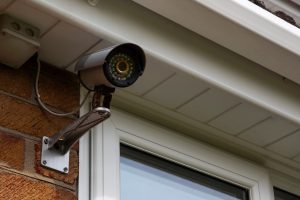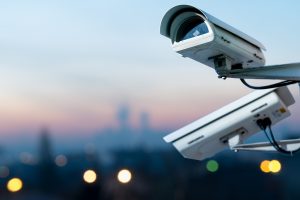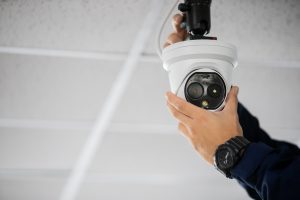Home security is a critical concern for many homeowners, especially in today’s world where crime rates can be unpredictable. Ensuring that your home is well-protected requires more than just standard locks and alarms; it necessitates advanced solutions that provide comprehensive surveillance.
One of the most effective ways to enhance your home security is through the use of advanced CCTV technology. These systems offer numerous benefits that go beyond the capabilities of older surveillance methods, making them an essential component of modern home security strategies.
Advanced CCTV technology has revolutionised the way we approach home security. These systems are not only more reliable but also offer a range of features that provide superior protection and peace of mind.
From high-definition video quality to remote monitoring capabilities, advanced CCTV systems are designed to meet the evolving needs of homeowners. In this blog, we will explore the various aspects of advanced CCTV technology and how it can help secure your home effectively.
Understanding Advanced CCTV Technology
Advanced CCTV systems are characterised by their state-of-the-art features and functionalities that set them apart from traditional surveillance cameras.
These systems typically include high-definition video recording, night vision capabilities, motion detection, and the ability to connect to the internet for remote monitoring.
The integration of these features ensures that homeowners can monitor their property in real-time, no matter where they are, and receive alerts about any suspicious activity instantly.
The evolution from traditional to advanced CCTV technology represents a significant leap in home security. Traditional systems often suffer from poor video quality and limited storage, whereas advanced systems utilise digital technology to provide clearer images and more storage options.
Furthermore, the ability to integrate CCTV with other smart home devices allows for a more cohesive and responsive security system, making it easier to manage and enhancing overall protection.
Key Features of Advanced CCTV Systems
One of the standout features of advanced CCTV systems is high-definition video quality. This ensures that every detail is captured with clarity, making it easier to identify intruders and other security threats.
In addition to high-definition video, many modern CCTV systems come equipped with night vision capabilities, allowing for clear recording even in low-light conditions. This is particularly useful for outdoor surveillance, where lighting conditions can vary significantly.
Another important feature is motion detection, which enables the system to alert homeowners to any movement within a specified area. This can be particularly useful for detecting intruders before they have the chance to enter the property.
Remote access is another key feature, allowing homeowners to monitor their CCTV footage from anywhere in the world using a smartphone or computer.
This real-time access ensures that you are always aware of what is happening at your property, providing peace of mind and enhancing security.
Installation and Placement Tips
Professional installation of advanced CCTV systems is crucial to ensure they operate effectively. A professional installer can help determine the best locations for cameras, ensuring maximum coverage and minimal blind spots.
Strategic placement is essential to capture key areas of your property, such as entry points, driveways, and common areas. Proper installation also ensures that the system is configured correctly and that all features are fully operational.
When considering placement, it’s important to think about the specific needs of your property. For example, outdoor cameras should be placed high enough to avoid tampering but low enough to capture clear images of faces and vehicles.
Indoor cameras, on the other hand, should cover entry points and high-traffic areas. Regular maintenance and checks are also important to ensure that cameras remain unobstructed and that the system continues to function properly.
Integration with Smart Home Systems
Integrating your CCTV system with other smart home devices can significantly enhance your overall security. For instance, connecting your cameras to smart locks can allow you to see who is at your door before granting access.
Similarly, integration with smart lights can enable them to turn on automatically when motion is detected, potentially deterring intruders and providing better visibility for the cameras.
The benefits of integration extend beyond just enhanced security. A fully integrated smart home system can provide a more convenient and seamless user experience.
For example, you can receive alerts on your smartphone if motion is detected, view live footage, and even control other connected devices all from one app.
This level of control and connectivity ensures that you are always in command of your home’s security, no matter where you are.
Data Security and Privacy Concerns
While advanced CCTV systems offer many benefits, it’s important to consider data security and privacy. Ensuring that your system uses encrypted data transmission can protect your footage from being accessed by unauthorised individuals.
Many modern CCTV systems offer encrypted storage options, either locally on a secure device or in the cloud, providing an additional layer of protection.
Maintaining privacy is also crucial, particularly when using remote access features. It’s important to follow best practices, such as using strong passwords, enabling two-factor authentication, and regularly updating software to protect against vulnerabilities.
Additionally, homeowners should be aware of legal considerations regarding surveillance, ensuring that their use of CCTV complies with local laws and regulations to avoid potential legal issues.
Maintenance and Regular Checks
Regular maintenance of your CCTV system is essential to ensure it continues to function effectively.
This includes routine checks to ensure that cameras are clean and unobstructed, that all connections are secure, and that the system is recording properly.
Many advanced systems offer self-diagnostic features that alert you to potential issues, but it’s still important to perform manual checks periodically.
When troubleshooting, knowing common issues and their solutions can save time and ensure your system remains operational. Problems such as poor video quality, connectivity issues, or false motion alerts can often be resolved with simple adjustments or software updates.
However, it may be necessary to consult a professional for more complex issues. Regular maintenance not only ensures that your system is working correctly but also helps extend its lifespan.
Cost vs. Benefit Analysis
Investing in an advanced CCTV system can be a significant expense, but the benefits often outweigh the costs. The initial investment includes the cost of the equipment, professional installation, and any subscription services for remote access or cloud storage.
However, these costs are offset by the increased security and peace of mind that come with knowing your home is protected.
In addition to the direct security benefits, having a high-quality CCTV system can also lead to potential savings on home insurance premiums.
Many insurance providers offer discounts for homes with advanced security systems, recognising the reduced risk of burglary and property damage.
Moreover, the presence of a CCTV system can deter criminals, further protecting your property and potentially preventing costly incidents.








